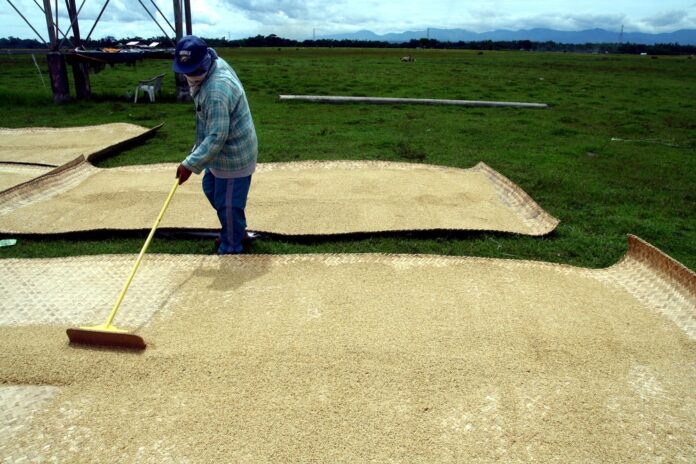The Federation of Free Farmers (FFF) is urging the government to impose a minimum buying price for palay, warning that plummeting farmgate prices driven by cheaper rice imports and other factors are threatening the livelihoods of Filipino rice farmers.
FFF chairman Leonardo Montemayor said Thursday that some farmers are now forced to sell freshly harvested palay at only ₱12 to ₱14 per kilogram, significantly below production costs, leading to severe financial losses.
“At this rate, many farmers will end up with losses,” Montemayor said. “If the government has imposed a maximum suggested retail price for consumers, it should also protect farmers by requiring traders to buy palay from them at a minimum price.”
Montemayor suggested a floor price of ₱20 per kg for dry palay, noting that this would yield farmers around ₱3,400 per hectare per month, assuming an average yield of 4.1 tons per hectare and production costs of ₱15 per kg.
The FFF also highlighted the limited capacity of the National Food Authority (NFA), which can only procure 4 to 5 percent of total harvest due to budget and logistical constraints. This forces most farmers to sell to private traders, who often pay below-cost prices and require strict quality standards that many small farmers cannot meet.
To further protect farmers, Montemayor proposed pairing the floor price policy with seasonal rice import tariffs, where duties are temporarily raised during local harvest periods to reduce the impact of imports, then lowered after harvests.
Jayson Cainglet, executive director of the Samahang Industriya ng Agrikultura (SINAG), echoed the call, emphasizing that a palay floor price should be extended to other key crops like tomatoes and onions to keep farming sustainable.
However, Cainglet also stressed the importance of long-term reforms such as lowering production costs and restoring higher rice tariffs to fund direct support for farmers.
Department of Agriculture (DA) spokesperson Arnel de Mesa confirmed that the agency is studying the proposal but noted the complexity of implementing a uniform floor price, given the wide range in production costs—from ₱11.20 in Nueva Ecija to ₱18 in other areas.
Current DA market monitoring shows that local well-milled rice in Metro Manila is selling between ₱38 and ₱54 per kg, while imported regular milled rice is priced from ₱33 to ₱45 per kg, illustrating the strong price competition local farmers face.
Montemayor concluded, “In the same way that we set minimum wages for labor, we must find ways to give our farmers fair and adequate compensation for the work they do in feeding the country.”







